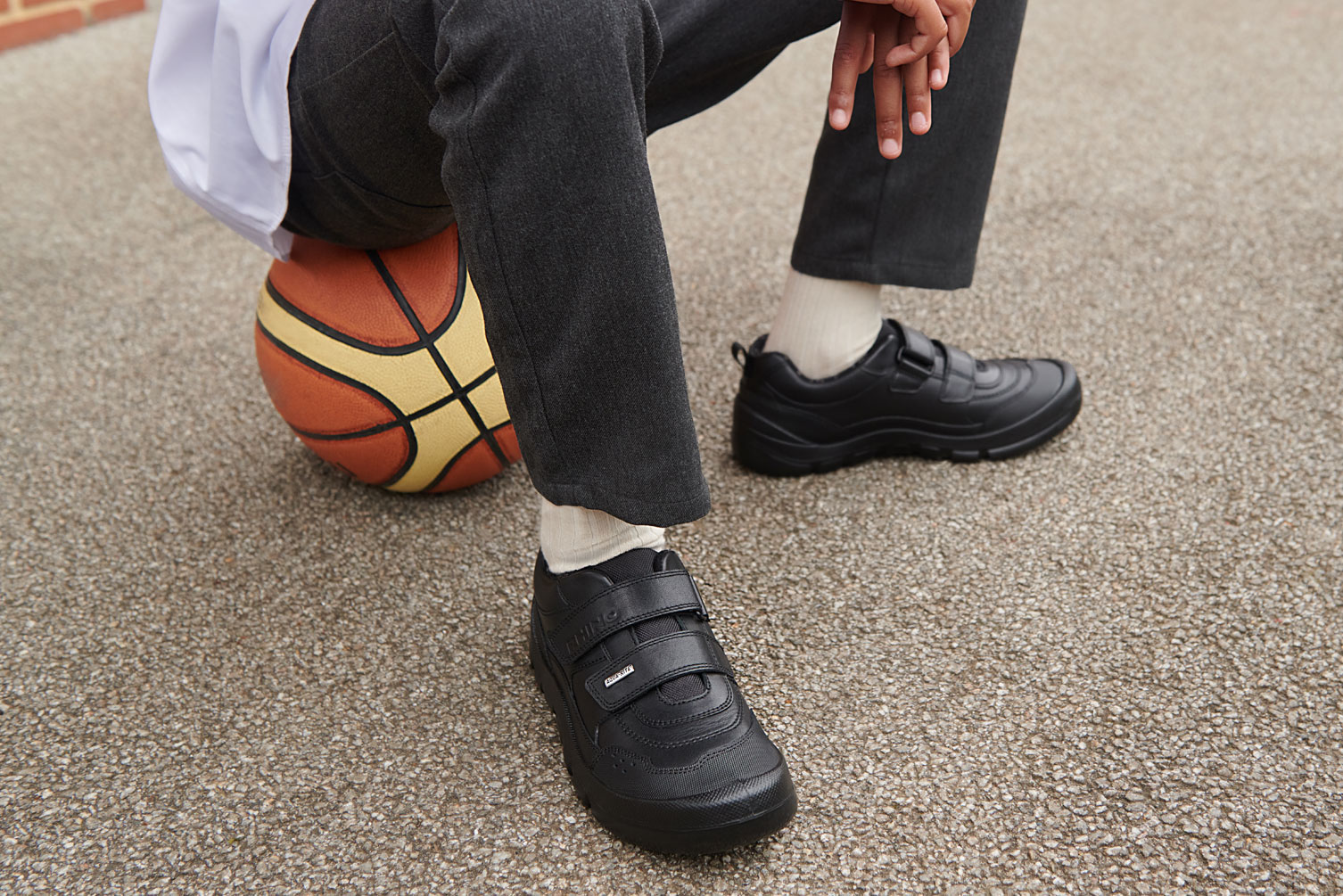How to stop new shoes from squeaking

Kitted out the kids in some brand new shoes? Whether it’s the start of the school term or your little ones have simply outgrown their old footwear, everyone likes having a shiny new pair of shoes on their feet.
However, there can be a period of adjustment with new footwear. You may need to break in new shoes, stop them from squeaking and even wait for that ‘new shoe smell’ to fade. Read on to find out how to sail smoothly past these common new shoe issues.
How to stop new shoes squeaking
Some kinds of new shoes can be a little squeaky at first. This isn’t a major problem, but it can make the wearer feel a little self-conscious and draw unwanted attention. For school shoes, it’s an issue best dealt with before the start of term. After all, no one wants to attract the attention of the whole school walking into assembly in noisily squeaking shoes.
The good news is, there are a number of tips and tricks you can try to get rid of that dreaded squeaking sound. Let’s take a look:
- Sprinkle a little baby powder under the insole, if it's removable
If the insoles are moving around when you’re walking, this could be the source of the squeaking. Baby powder can help to reduce the friction between the insole and the shoe. It can also absorb any moisture, which could be trapped underneath the insole (which doesn’t help with the squeaking).
- Wear the shoes in
Some shoes only squeak at first, and this goes away once they’ve been worn a few times. You can speed up the breaking in process by encouraging your child to wear their new shoes as much as possible. Even just a few minutes at a time, every day for a week or two before the start of the school term, can be effective. That pesky squeaking noise will be gone before you know it.
- Use specialist products to silence squeaky shoes
Certain kinds of footwear are especially prone to squeaking, such as rain boots, water-resistant shoes or shoes with non-slip soles. These can be treated by applying silicone sprays like WD-40 sparingly to any part of the shoe that connects to another. For example, above the heel or around the edges of the sole. Spray onto a paper towel or cotton wool ball first, then dab gently in the affected area. Bear in mind though that this kind of treatment isn’t suitable for all shoe types, as it can cause damage to more delicate materials.
How to get rid of new shoes smell
Another common issue with brand new shoes is that ‘new shoe smell’. While in leather shoes it can sometimes be quite nice, other types of shoes can have a less pleasant synthetic smell - likely left over from the manufacturing process.
This smell will of course fade over time, especially the more the shoes are worn. But there are a couple of shortcuts you can try:
- Simply wipe down the shoes
Use warm water, washing up liquid and a soft cloth to wipe down the shoes. You should only do this with shoes that are waterproof or water resistant though. Repeat the process a couple of times, and you’ll get rid of some of the chemical residue sitting on the surface of the material.
- Air out the shoes
When they’re not being worn, make sure the shoes are stored in a well-ventilated room with lots of air flowing through it. You can also try packing them in newspaper, as this can absorb smells.
- Dust with bicarbonate of soda
This common cooking ingredient is great for absorbing odours. This makes it a great tip not only for getting rid of that new shoe smell, but also for freshening up older or heavily worn shoes. Dust the bicarb of soda over and into the shoes, then dust, wipe or vacuum away. You can also try odour-absorbing foot powder.
How to make new shoes not slippery
The last issue your children might have when adjusting to new shoes is a lack of grip. If you’re worried about trips or stumbles from slippery shoes, there are a couple of ways you can improve the traction.
The first is to use a spray-on coating. There are specialist grip sprays you can buy from shoe shops, which add tackiness to the sole of the shoe. You can also try hairspray, which will do a similar job. You will need to reapply if the slipperiness doesn’t go away.
Author: Click Consult, published 09-05-2023.
